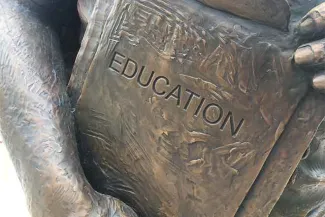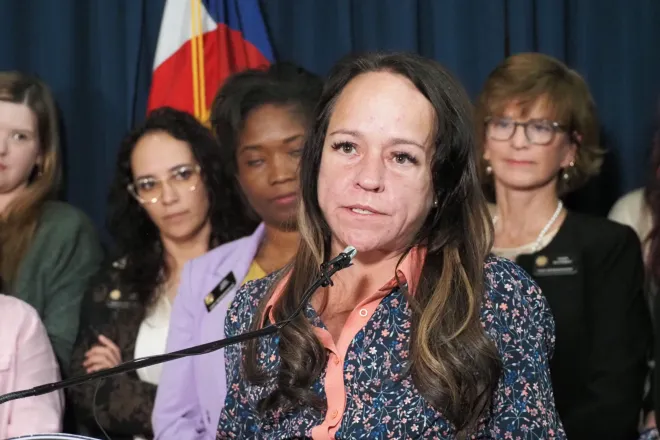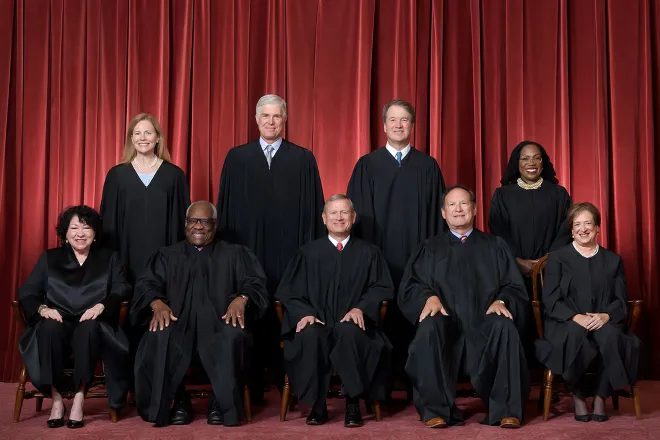
Former federal workers warn of risks to Colorado education funding
Delaney Jarmon, an Aurora Public Schools special education teacher, holds a "budget cuts never heal" sign in March at the Colorado Capitol in Denver. (Lindsey Toomer/Colorado Newsline)
Two furloughed employees with the U.S. Department of Education warned Colorado lawmakers on Wednesday that a reduced workforce in the department could result in delayed or incorrectly disbursed grant money to the state.
The Colorado Department of Education receives about $870 million from the federal government, or a little over 11 percent of its money, according to Commissioner of Education Susana Córdova.

© flickrcc - Alan Levine
“The funding that we receive through all of these different funding sources are supplemental funds that really are essential to services, particularly for the most vulnerable students,” she said during a special Senate Education Committee hearing.
That money comes from grant allocations doled out by program, ranging from about $206 million for special education and services for students with disabilities to about $371,000 for students in juvenile detention centers or other alternative education settings. Other programs support students in poverty, students learning English and out-of-school enrichment programs.
Since 2010, the money has spread across over 100 grant programs for a total of over $20 billion.
But two recently-furloughed employees from the Office of Elementary and Secondary Education said that the slashed workforce directed by the Trump administration could endanger efficient data processing and ultimately disturb the timeline and accuracy of funding disbursements.
“The office’s day-to-day operations are guided by a grant making life cycle, which includes pre-award, award and post-award activities. It is not as simple as writing a check,” said Sarah Newman, who helped lead the office’s data management team.
The work includes publicizing grant opportunities, assessing grantee risk, calculating funding using formulas, ensuring compliance and providing technical assistance. All of that relies on data processed and maintained by Newman’s team. They looked for anomalies and errors that would affect funding.

© iStock - Geerati
Since President Donald Trump ordered the drastic reduction of the department in March, about 90 percent of the OESE workforce has been fired or left, Newman said. Trump has repeatedly called for the closure of the Department of Education, which he does not have the power to do as president, but he can severely reduce its capacity.
“Since January 20, the current administration has taken numerous actions that have threatened the operations of (the Education Department), as well as the sustainability of the funding and services Colorado currently receives,” Newman said. “I stand before you today concerned that, beginning with this next fiscal year, the federal funds Colorado schools have come to rely on will not be there.”
It could also impact the current round of funding. Even though data was submitted and sent to the programs, people on the team were fired before the standard correction period ended.
“I worry that the decisions made to distribute the grants on July 1 are based on preliminary data, which the states did not have an opportunity to correct or explain. I also have concerns about the program’s ability to do all the work required just to make the awards in time,” said data analyst Joe Murphy.
Murphy and Newman emphasized that delayed, repurposed or eliminated funding would have the biggest impact on school districts in poor and rural areas. Littleton Public Schools, for example, gets about 5 percent of its funding from the federal government, but Fountain-Fort Carson School District 8, which misses out on property tax revenue because of its proximity to an Army base, gets 30 percent of its funding from federal sources.
Newman and Murphy suggested that state lawmakers try to use historical funding data and codify at the state level the federal Every Student Succeeds Act, which is the country’s main education law. The law includes the federal programs related to low-income students, students of color, students with disabilities, English Learners and other historically marginalized students.
Murphy worries that the federal government will resort to giving block grants to states, rather than divided up by program. That switch would require a change in federal law.
“You can look at what’s in ESSA and say, ‘These are the funds, and this is where they’re supposed to go’ and carry that out at the state level,” Murphy said.
The state’s legislative session ends the first week of May, so such a large policy undertaking could be near-impossible this year.
Córdova, the education commissioner, told lawmakers that she is hopeful that “verbal commitments” to maintain program funding for low-income students and students with disabilities will stick.
“What we’ve heard from the new secretary of Education is a commitment to continue funding,” she said. “We’re very hopeful that that would be the case, because I think absent that funding, very important and critical services would be missing for students who rely on them.”
















